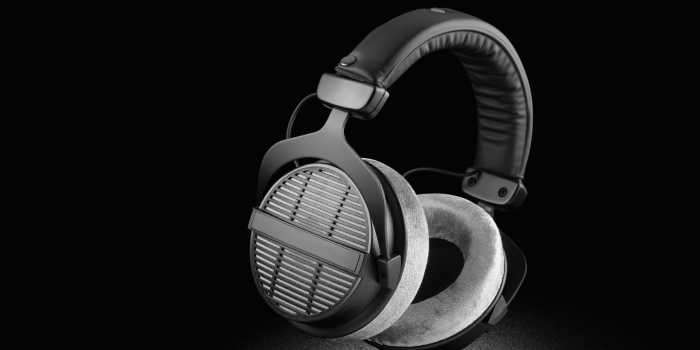When it comes to the realm of audio technology, one of the age-old debates that continues to pique the interest of music lovers and audiophiles alike is the question of whether open-back headphones or their closed-back counterparts produce a sound that is superior in quality to that of the other.
Within the realm of audio equipment, this intriguing conundrum has sparked a plethora of conversations, comparisons, and vehement arguments.
People who are interested in having an immersive and high-fidelity listening experience have long been fascinated by open-back headphones because of their one-of-a-kind design and the acoustic properties they possess.
In this investigation, we will delve into the fascinating world of open-back headphones and investigate the factors that contribute to their reputation for having superior sound quality. In addition, we will take into consideration the drawbacks of open-back headphones as well as the circumstances in which closed-back headphones may still hold their own.
Let us therefore set out on an adventure to solve the riddles surrounding open-back headphones and determine whether or not they really do provide a more satisfying listening experience. 1. The study of acoustics and sound
The phenomenon that we refer to as sound is actually the result of a complicated interaction between vibrations traveling through the air and waves arriving at our ears.
The construction of the headphones we use has a significant impact on the way in which these sound waves interact with our auditory system. The science that governs the transmission of sound is utilized by open-back headphones, which results in a more authentic reproduction of the sound being heard.
The ear cups of open-back headphones are constructed in such a way as to enable unrestricted circulation of air through the device.
Open-back headphones, as opposed to closed-back headphones, allow ambient sounds to enter the ear cups, whereas closed-back headphones block out all outside noise and isolate the listener from it. This one-of-a-kind construction has significant repercussions for how sound is perceived.
How to Evaluate the Sound Quality of Open-Back Headphones
2. Soundstage and Immersion in the Experience
The enhanced sense of soundstage that is provided by open-back headphones is one of the primary reasons that audiophiles gravitate toward using these headphones. The term “soundstage” refers to the spatial dimension of audio, which enables listeners to perceive the location of sound sources within the music as well as the movement of those sound sources.
Open-back headphones are superior in terms of their ability to produce a wider soundstage, which gives the listener the impression that they are in the middle of a live performance.
When you put on a pair of headphones with open backs, the sound of the music seems to spill out of your head and into the surrounding space.
The stereo image becomes more prominent, and the three-dimensional quality of the instruments and vocals becomes more pronounced. This immersive experience is akin to being seated in a concert hall, where sound naturally reverberates due to the presence of walls and the way sound interacts with them.
3. Clarity and transparency are highly valued.
The exceptional clarity and transparency of open-back headphones is another defining characteristic of this type of headphone.
In the world of audio, the term “transparency” refers to the capacity of headphones to faithfully reproduce the sound of the original recording, maintaining all of the subtleties and nuances that are susceptible to being lost in closed-back designs.
In order to accomplish this, open-back headphones allow sound waves to escape through the rear of the ear cups. This eliminates the possibility of sound reflections, which can occur when using closed-back headphones.
Because of this, the music is represented in a manner that is cleaner and more accurate. The meticulous attention to detail extends to every facet of the performance, from the light strum of a guitar string to the breaths taken by the singer.
4. Both the Bass Response and Open-Back Design are Excellent.
There is a widespread misunderstanding regarding open-back headphones, which is that they do not have bass. On the other hand, this could not be further from the truth.
When designed and constructed properly, open-back headphones are able to produce bass that is both deep and impactful. The headphones’ drivers and acoustics need to be fine-tuned in order to achieve the best sound quality.
Because bass frequencies are not confined by the ear cups in open-back designs, they are able to resonate in a manner that is more true to their natural state.
This can result in a cleaner and more controlled bass response, free from the muddiness that sometimes occurs in closed-back headphones.
This is because the sound is able to escape from behind the headphones. When properly engineered, open-back headphones have the potential to deliver a bass experience that is both well-balanced and satisfying.
5. Comparison of Sound Isolation and Sound Leakage
Open-back headphones have poor noise isolation and allow some sound to escape, which is one of the trade-offs for their convenience.
Because of their superior ability to isolate you from ambient noise, closed-back headphones are particularly well-suited for use in noisy environments, such as on public transportation.
On the other hand, open-back headphones let outside sounds into the ear cups and can leak audio to the outside world. Closed-back headphones block out outside sounds completely.
When deciding between open-back and closed-back headphones, this trade-off is one of the most important aspects to take into consideration.
If you are in an environment free from distractions, such as a room without a lot of background noise, the open-back design of the headphones can give you a more immersive listening experience.
On the other hand, when listening in noisy environments or when maintaining one’s privacy is of the utmost importance, closed-back headphones are likely to be the superior option.
6. Relaxation and Extended Periods of Listening
Open-back designs typically perform exceptionally well in terms of comfort, which is an essential quality in headphones.
During extended listening sessions, the heat that can build up and cause discomfort is reduced thanks to the ear cups’ open-back design, which allows for better airflow. In addition, the absence of an ear cup that is sealed can reduce the sensation of pressure that is being applied to your ears.
Open-back headphones are often considered to be the more comfortable option for music enthusiasts and audiophiles who listen to music for long periods of time. You are able to completely submerge yourself in the experience of listening to your preferred music without the interruption of discomfort or wet ears.
7. Different Types of Music and Open-Back Headphones
Your preferred style of music can also play a role in determining whether you should go with open-back or closed-back headphones. While the open-back design may not show significant advantages for some musical genres, it is particularly beneficial for others.
Open-back headphones can bring out the best in certain musical genres, particularly those that place a heavy emphasis on acoustic instrumentation, such as classical music, jazz, or expansive orchestral compositions. The complexity and depth of such music are accentuated by the presence of an expansive soundstage and clear sound.
On the other hand, musical styles like hip-hop or electronic dance music, which are characterized by heavy bass, may not be as dependent on the benefits of an open-back design as other musical styles are. In situations like these, closed-back headphones have the potential to deliver a bass response that is more concentrated and impactful.
8. Aspects of the Environment That Affect Hearing
It is essential to acknowledge that one’s perception of sound is highly subjective and can be shaped by personal preferences, different types of audio sources, and varying levels of amplification. Your selection of headphones ought to be in accordance with your one-of-a-kind listening preferences as well as the apparatus that you use.
Additionally, the performance of open-back headphones is heavily influenced by the acoustics of the environment in which they are used to listen to music.
Open-back headphones are at their absolute best in rooms that have been properly treated to reduce sound reflections. However, some of the benefits of open-back headphones might be lost in an environment that has a lot of background noise or is not treated in any way.
Conclusion
In conclusion, finding a clear answer to the question of whether open-back headphones or closed-back headphones produce superior sound is not an easy task. Many audiophiles believe that open-back headphones offer the best combination of soundstage, clarity, and comfort; as a result, these headphones are the most popular option.
On the other hand, they are not perfect and have some drawbacks, particularly when used in noisy environments.
In the end, your listening preferences, musical tastes, and the specific circumstances in which you intend to use the headphones should drive your decision between open-back and closed-back headphones.
It is essential to investigate and value the individual qualities that each type contributes to your listening experience, regardless of which type you select. As a result of ongoing technological advancements, we can anticipate even more fascinating advances in the style and performance of headphones in the near future.
Frequently asked questions
1.Do open-back headphones sound better than closed-back headphones?
The perception of whether open-back headphones sound better than closed-back ones is subjective and depends on personal preferences and use cases. Open-back headphones are often favored for their spacious and natural soundstage, but closed-back headphones may excel in noise isolation and bass response.
2. What is soundstage, and why is it important in open-back headphones?
Soundstage refers to the perceived spatial dimension and placement of sound within audio playback. Open-back headphones are known for creating a wider and more immersive soundstage, which can enhance the listening experience for certain genres like classical and jazz.
3. Are open-back headphones suitable for use in noisy environments?
Open-back headphones are not ideal for noisy environments because they leak sound both in and out. They do not provide significant noise isolation, making them better suited for quiet or controlled settings like home listening.
4. Do open-back headphones have any disadvantages?
Yes, open-back headphones have some drawbacks. They lack noise isolation, making them unsuitable for use in loud environments or during travel. They also don’t deliver as much bass impact as closed-back headphones.
5. What genres of music are open-back headphones best suited for?
Open-back headphones are often favored for genres that benefit from a wide soundstage and detailed imaging, such as classical, jazz, acoustic, and certain types of rock music. However, they may not be the best choice for bass-heavy genres like electronic or hip-hop.
6. Can I use open-back headphones for gaming?
Open-back headphones can be used for gaming, and some gamers appreciate their accurate sound positioning. However, they may not be ideal if you need noise isolation or don’t want sound leakage affecting others around you.
7. Are open-back headphones more expensive than closed-back ones?
The price of headphones varies widely based on brand, features, and quality. Some open-back headphones can be more expensive than closed-back models, but this is not always the case.
8. What should I consider when choosing between open-back and closed-back headphones?
Factors to consider include your listening environment, the genres of music you prefer, your budget, and whether you prioritize noise isolation or a spacious soundstage.
9. Do I need a headphone amplifier for open-back headphones?
Some open-back headphones benefit from a headphone amplifier to reach their full potential, especially if they have high impedance. However, it’s not always necessary, and many open-back headphones can be driven adequately by portable devices.

